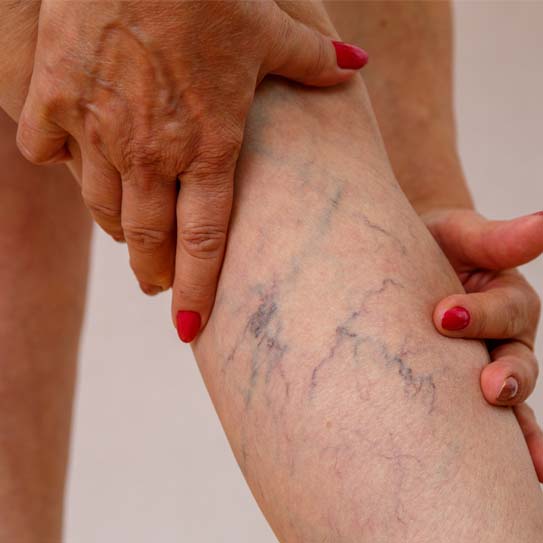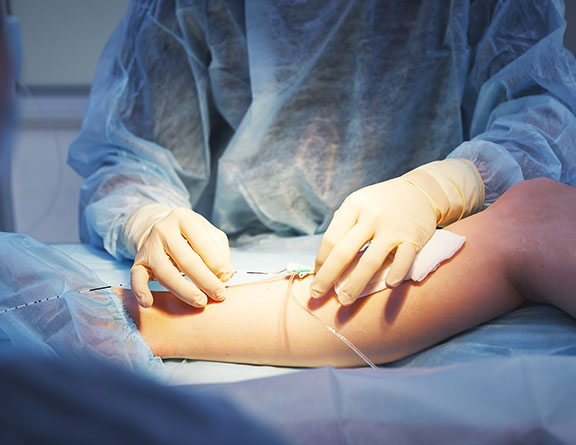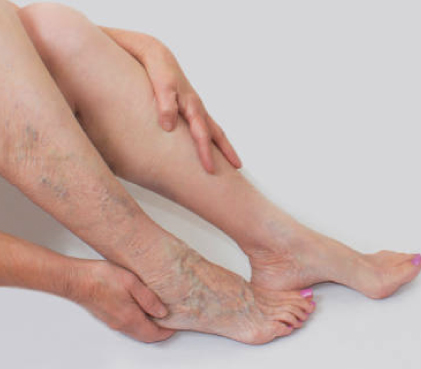
PRK surgery is conducted as an outpatient procedure and takes around 5 to 10 minutes each eye. The steps involved in the technique are as follows:
How much does PRK surgery in India cost?
In India, the cost of PRK surgery ranges between Rs. 25,000 and Rs. 60,000. The exact cost will vary depending on the patient. It is advisable to get an estimate from your healthcare practitioner.
How long will PRK be effective?
PRK is generally thought to be long-lasting since the corneal shape is permanently altered. However, PRK cannot prevent vision ageing. As a result, there is a potential that some eye problems will develop with age, causing vision changes.
What is the PRK success rate?
According to the FDA, the overall success rate of PRK is more than 95%, with a significant improvement in vision quality.
Ms. Roohi Gupta(changed name) complained about enlarged, bulgy, and blue-colored veins in both legs but much darker in the right one. She is a teacher and her profession includes standing and sitting for long periods regularly. She contacted us and informed our medical coordinator about fatigue and pain in her legs.
The medical coordinator booked her appointment with one of our expert vascular surgeons, Dr. Sanjit Gogoi. She had a detailed video consultation with the doctor. Dr. Gogoi scheduled a physical examination for diagnosing the severity of the varicose veins. During the diagnosis, Dr. Gogoi noticed redness around the affected area because of varicose veins. He further recommended a few diagnostic tests including duplex ultrasound to rule out any underlying disease.
After getting the results of the diagnostic tests, Dr. Gogoi advised Endovenous Laser Ablation (EVLA) to get rid of damaged and enlarged veins. He scheduled the surgery for later in the week. It was an outpatient procedure that took approximately 45 minutes. Once the was stable and showing regular vitals, Dr. Gogoi discharged her and she went back home on the same day of the surgery. He scheduled a follow-up consultation to check the progress of recovery post-surgery. Ms. Gupta reported no sign of pain and swelling and recovered well.

Also known as endovenous laser treatment or EVLA, this is a minimally invasive ultrasound-guided procedure that involves the use of ultrasound images and laser fiber in order to kill the delicate lining of the veins. After a few days following the procedure, the body absorbs the dead tissues, closing off the abnormal veins with minimal or no discomfort. This is one of the most commonly preferred methods as it involves far fewer complications, and the recovery time, as well as the success rate of this method, is much faster and higher than that of any surgical process.

Also known as endovenous laser treatment or EVLA, this is a minimally invasive ultrasound-guided procedure that involves the use of ultrasound images and laser fiber in order to kill the delicate lining of the veins. After a few days following the procedure, the body absorbs the dead tissues, closing off the abnormal veins with minimal or no discomfort. This is one of the most commonly preferred methods as it involves far fewer complications, and the recovery time, as well as the success rate of this method, is much faster and higher than that of any surgical process.

Also known as endovenous laser treatment or EVLA, this is a minimally invasive ultrasound-guided procedure that involves the use of ultrasound images and laser fiber in order to kill the delicate lining of the veins. After a few days following the procedure, the body absorbs the dead tissues, closing off the abnormal veins with minimal or no discomfort. This is one of the most commonly preferred methods as it involves far fewer complications, and the recovery time, as well as the success rate of this method, is much faster and higher than that of any surgical process.